Khinkali
The Georgian Military Highway, an epic route that cuts through the Caucasus to connect Tbilisi to the Northern Ossetian town of Vladikavkaz. One minute you’re driving through a narrow gorge. Snow-capped peaks and green-carpeted ridges loom on either side, herds of sheep and bales of hay dot the verdant slopes, and the rushing Aragvi River, never far, provides the setting’s soundtrack. You’re taking it all peacefully in until next thing you know—you’re ascending those mountains by way of precarious curves and switchbacks, holding on to dear life until the steep road hits its peak at Jvari Pass, around 8,000 feet.
Photo courtesy of Kelsey Petrie
Photo courtesy of Kelsey Petrie
Along the mountain road, at the stunning convergence of the two Aragvi Rivers, the Black and the White, sits Pasanauri. A popular country retreat for city folk in Soviet times, the quaint village is still a destination for many. Its visitors, however, make the journey not to gaze at the water, but to eat the town’s famed khinkali—the Georgian version of soup dumplings common throughout Central Asia and the Orient.
Some claim it’s in the special quality of the river waters, and others say it’s the local flour. It may be the lush backdrop of the mountains and the sound of the Aragvi, just across the road from where you’re seated. Whatever it is, I can promise you that you’ll be talking about that plate of steaming, perfectly pleated khinkali the whole drive home.
Photo courtesy of Kelsey Petrie
During our stay in Georgia, my mom and I ate countless soup dumplings, not only in Pasanauri, but in Tbilisi and all over the country. The Georgian soup dumpling is the most appreciated legacy of the Mongol occupation and we were all too happy to take part in the tradition. We brought that connoisseurship home with us to the U.S. and have been trying to recreate Pasanauri-worthy khinkali ever since.
Photo courtesy of Kelsey Petrie
Photo courtesy of Kelsey Petrie
This past summer, we got together with my Aunt Olga and my best friend Kelsey for an afternoon of khinkali-making. After lots of flour, laughter, and a few glasses of sparkling wine, we sat down to a magnificent feast outside. No mountains loomed over us or rivers streamed by, but with the company of a few of my loved ones and the luscious green of my aunt’s garden in the background—not to mention a table laden with food—the meal didn’t feel all too different from the one we had all those years ago. As for the khinkali, well, I think they could’ve passed for those of Pasanauri too.
Khinkali— Georgian Soup Dumplings
Makes about 20 dumplings
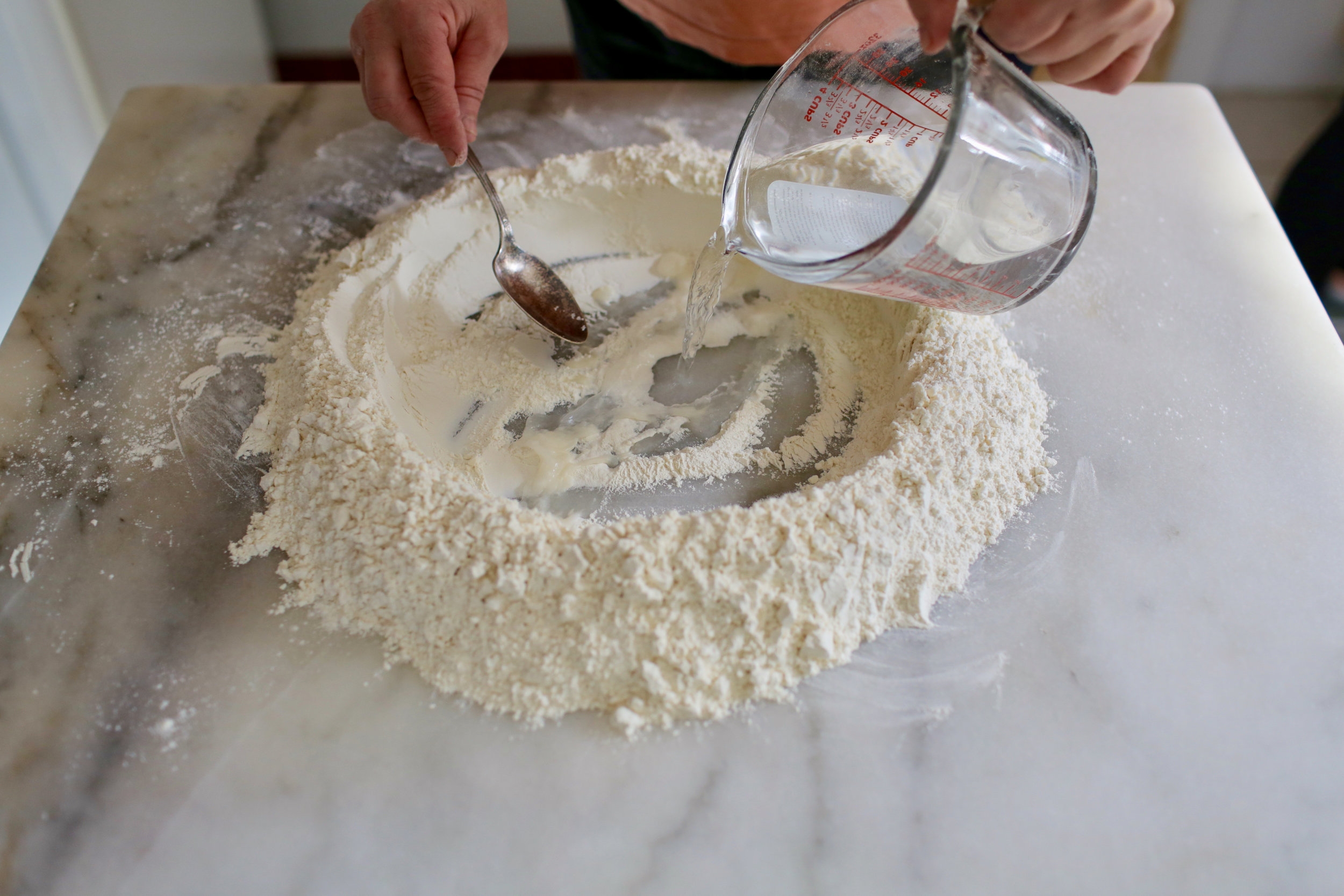
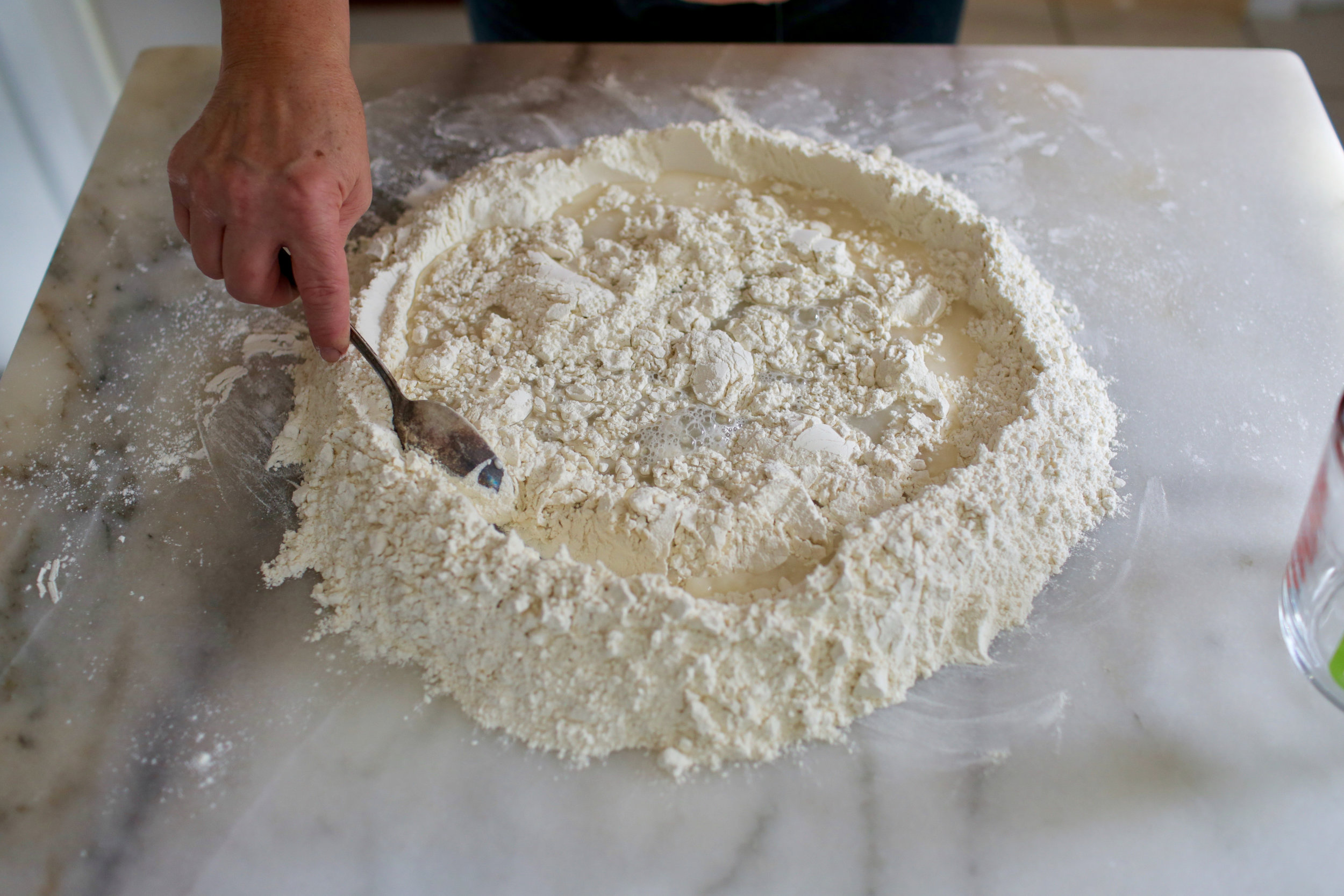
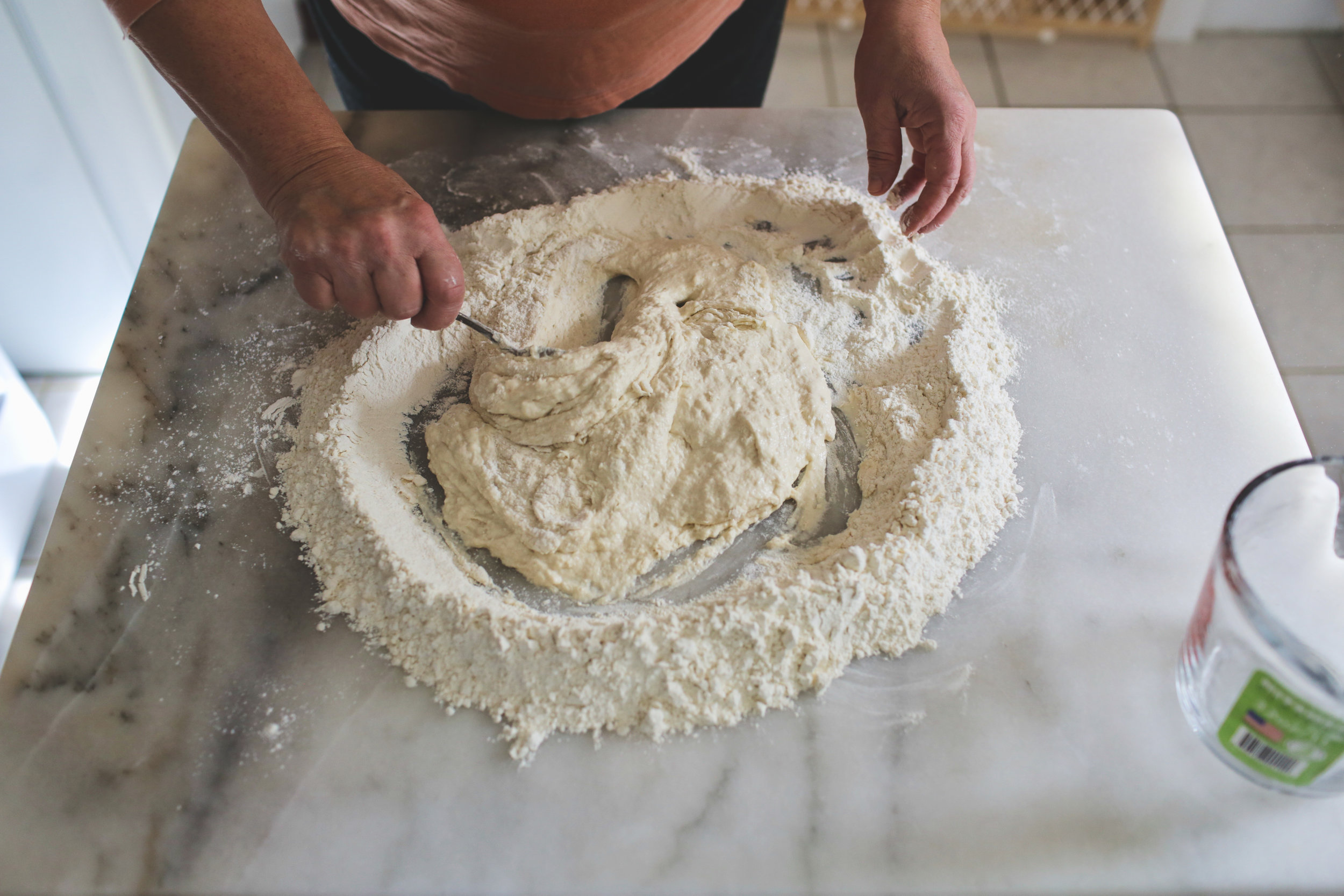
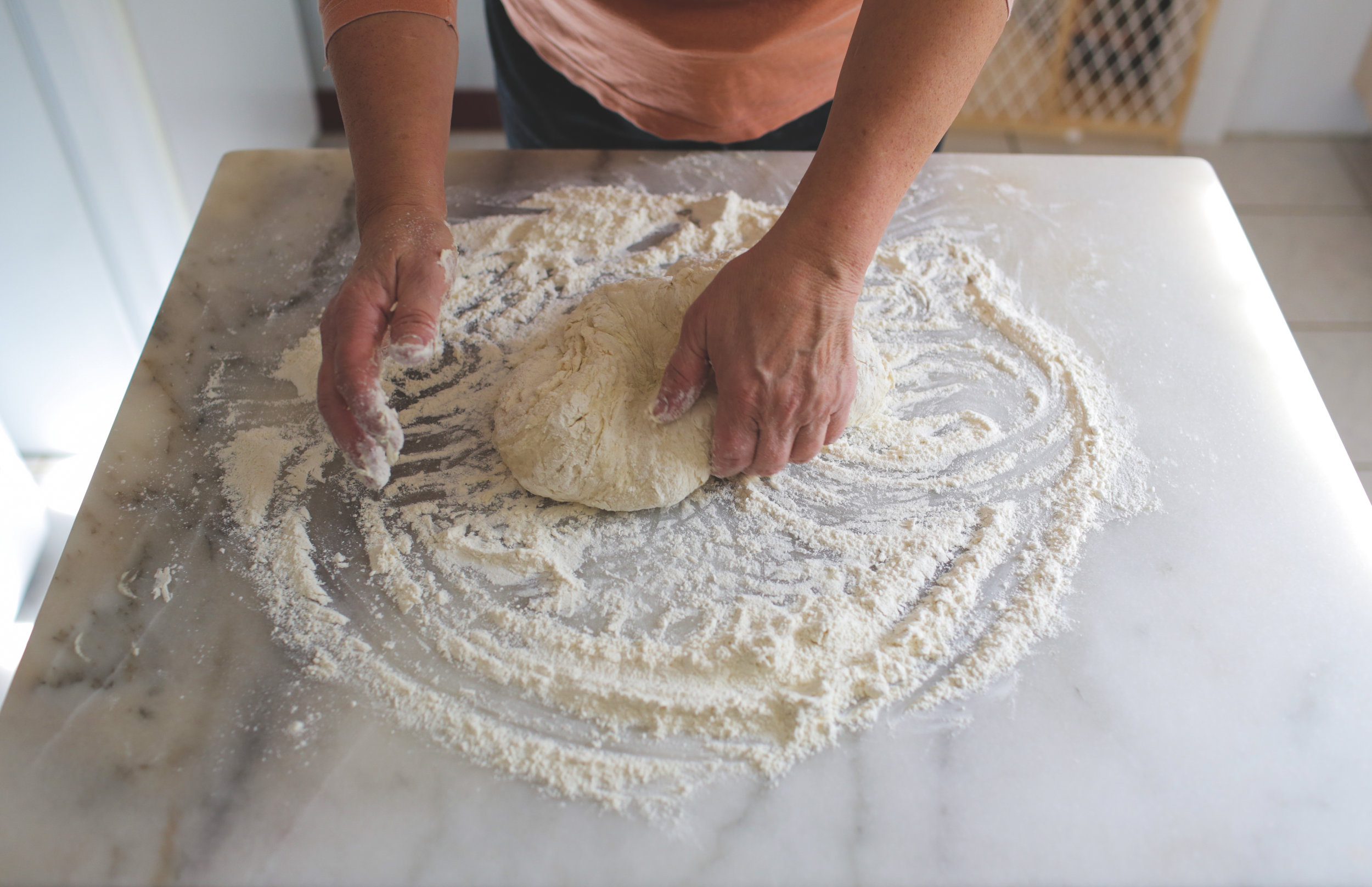
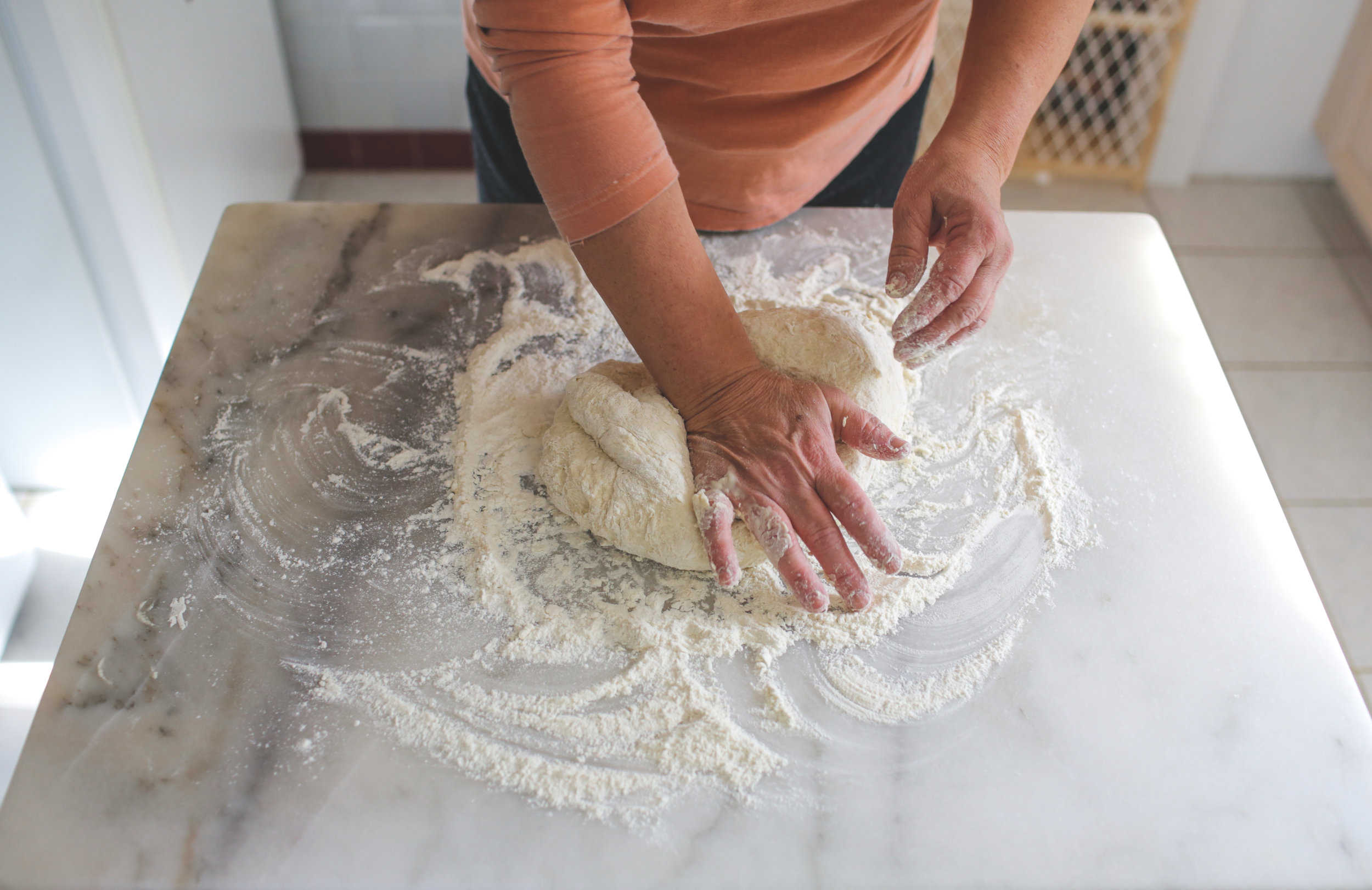

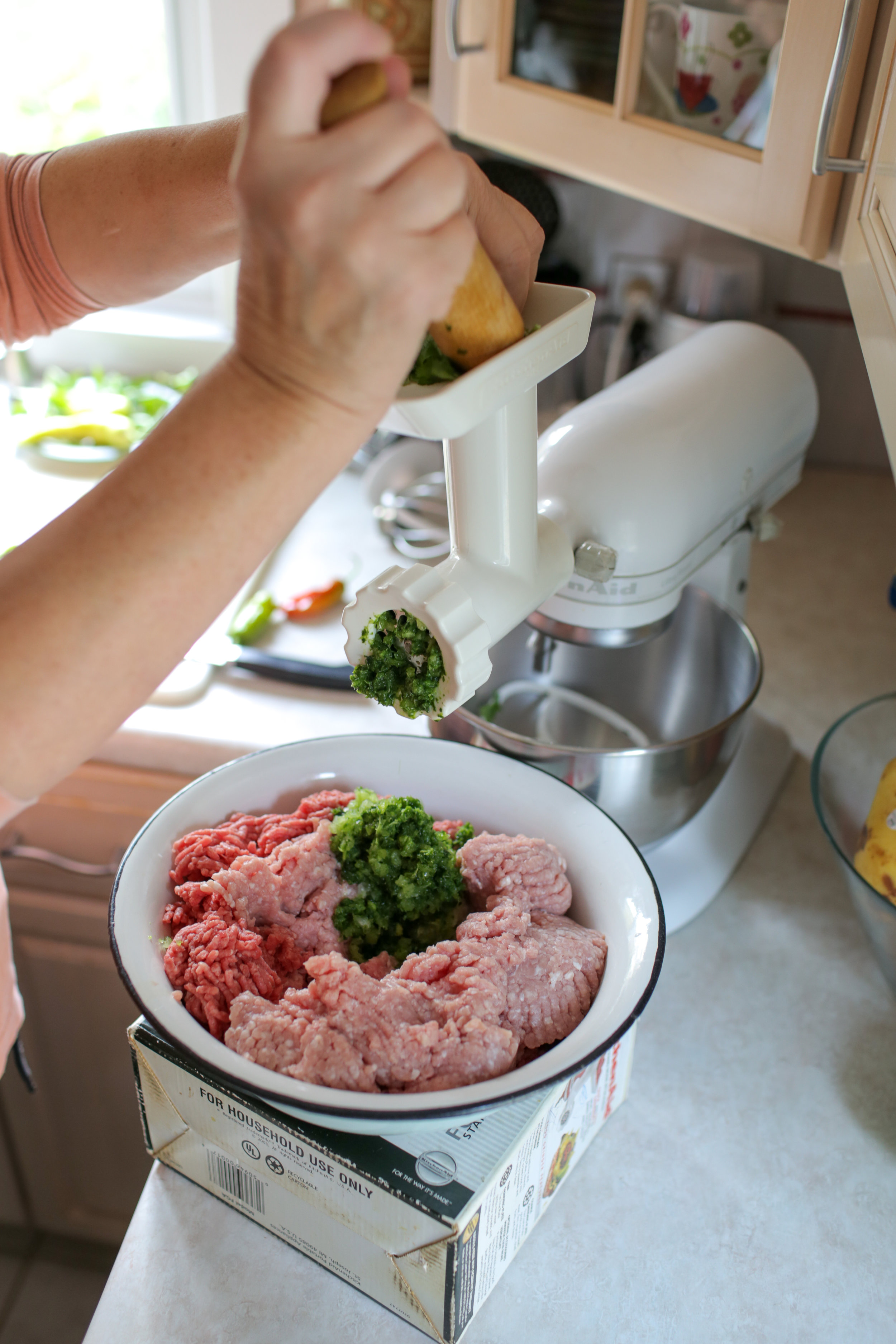
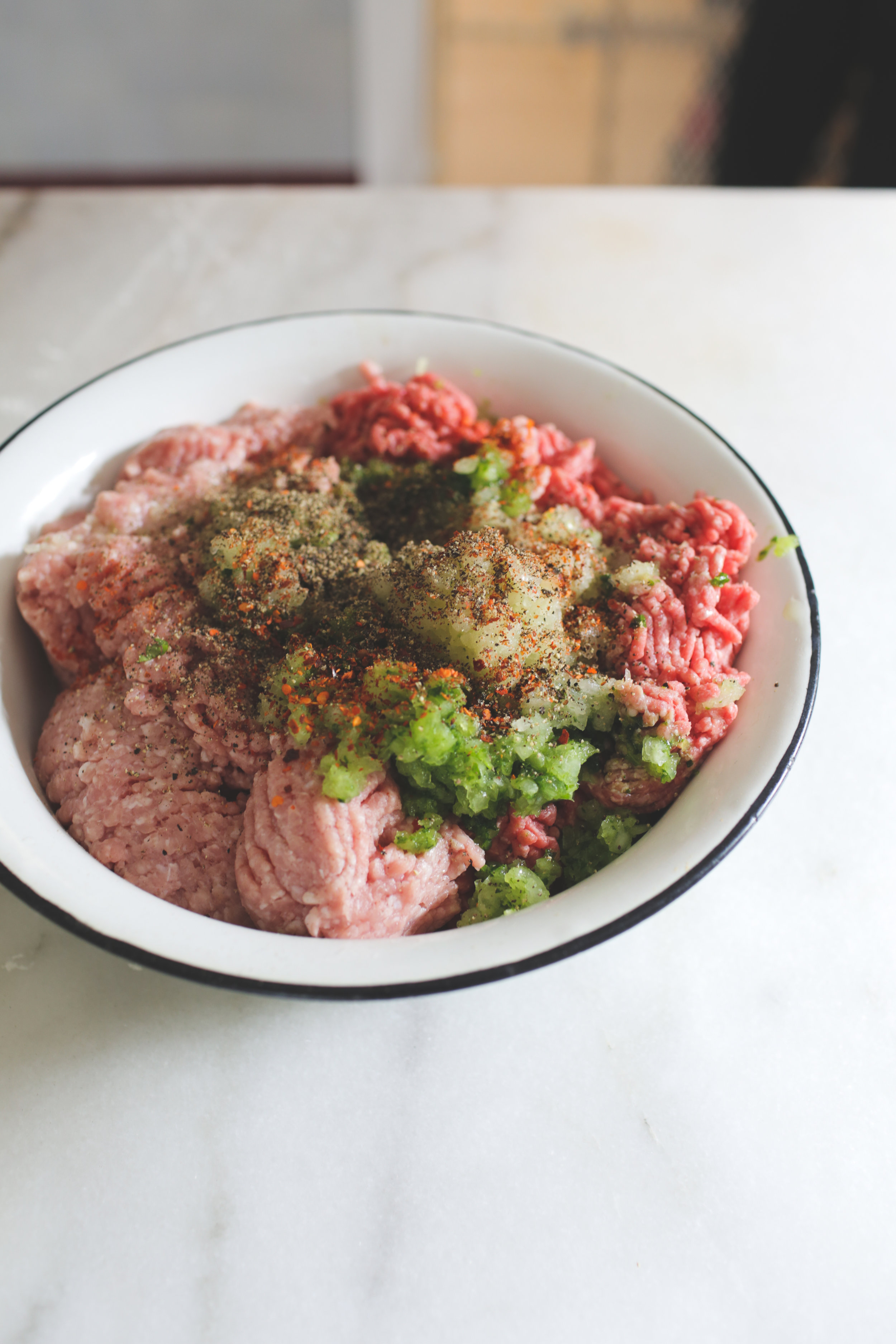
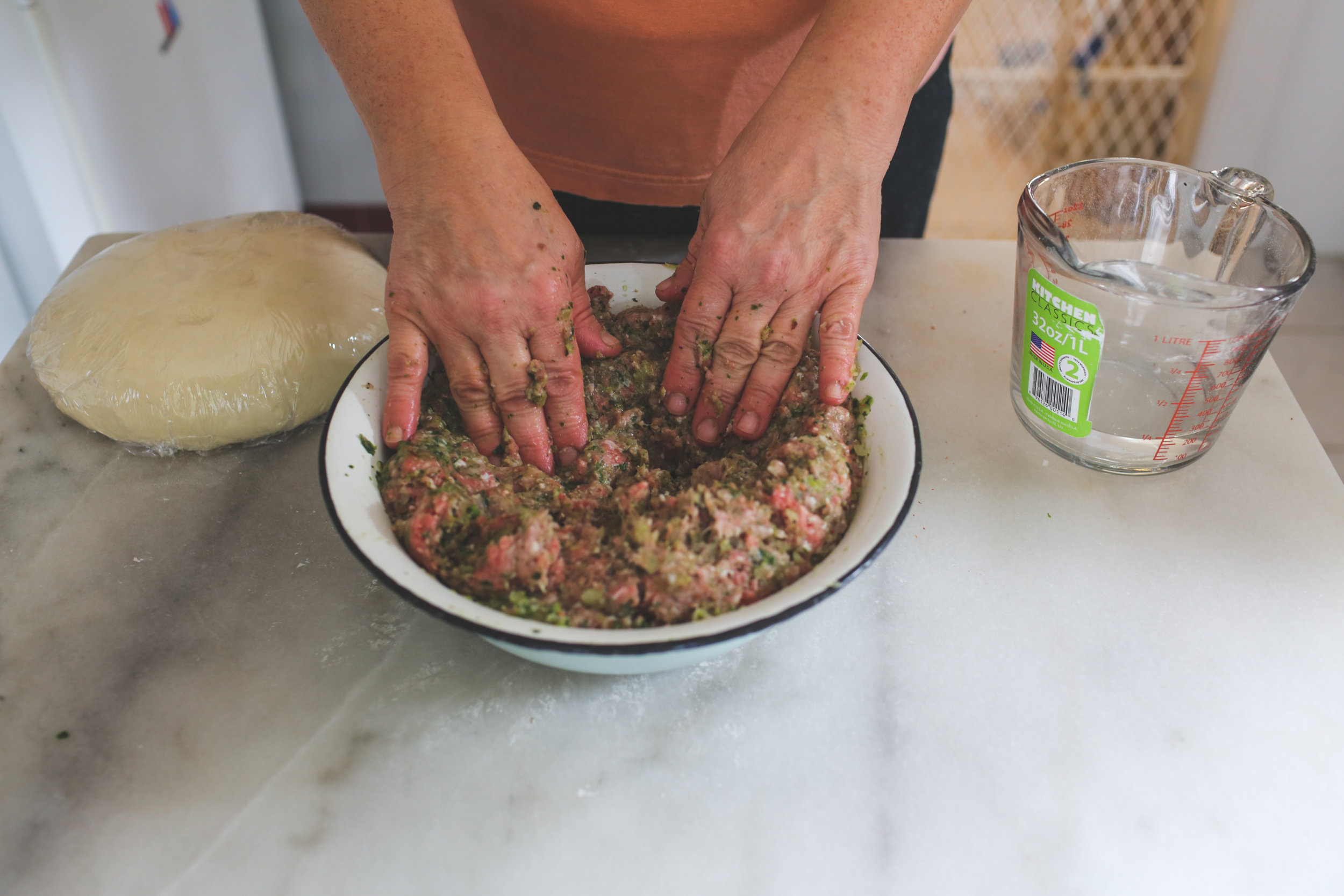
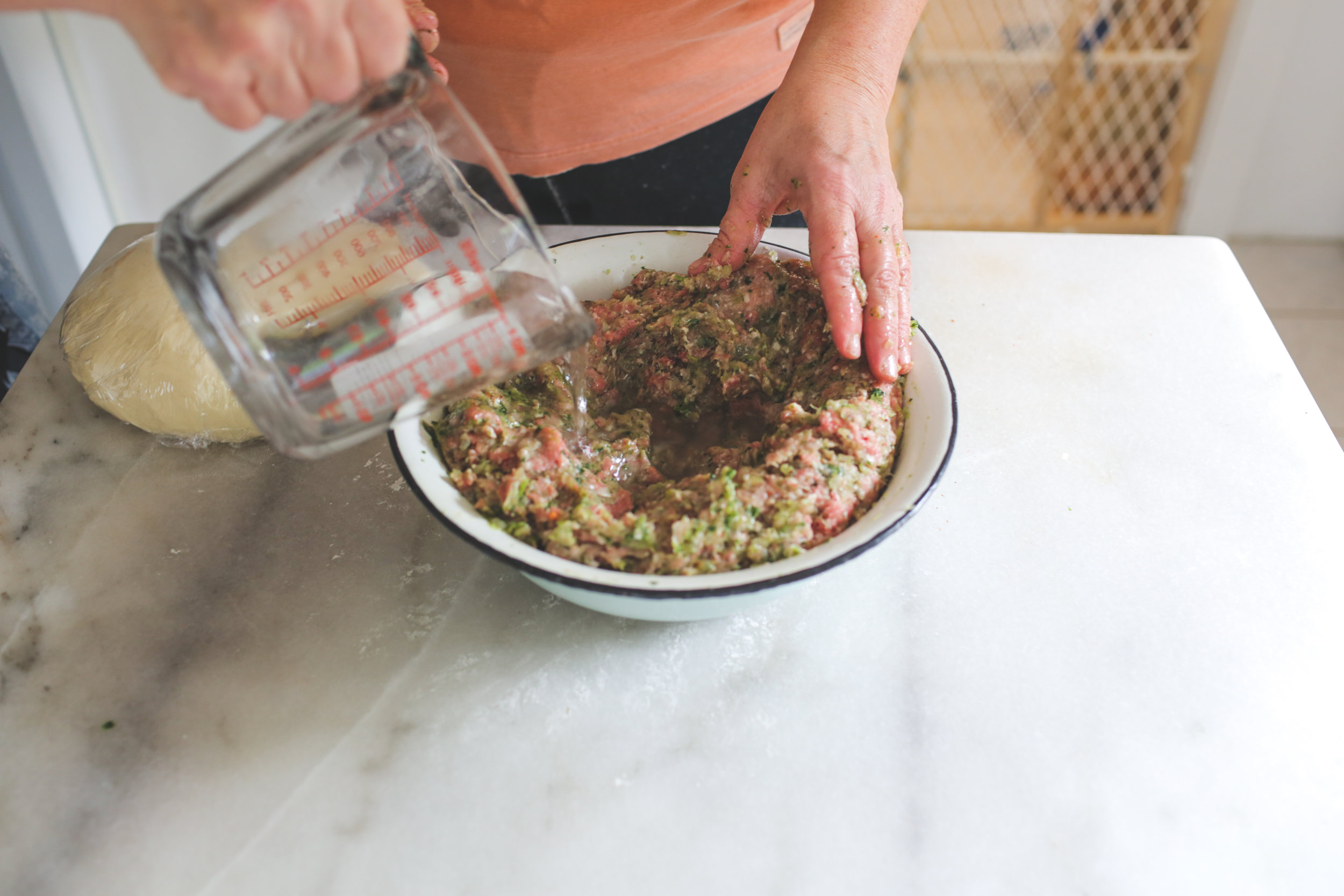
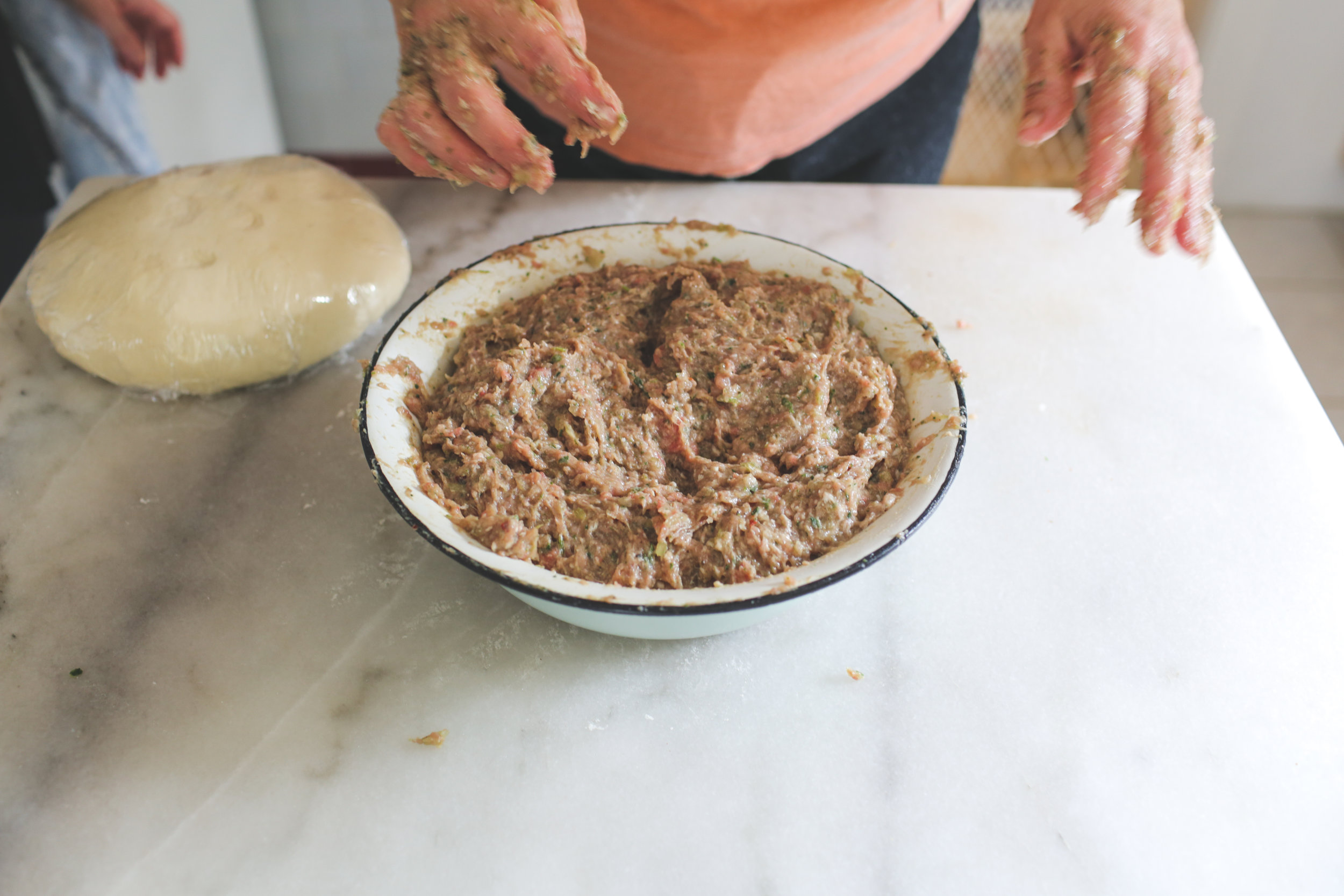
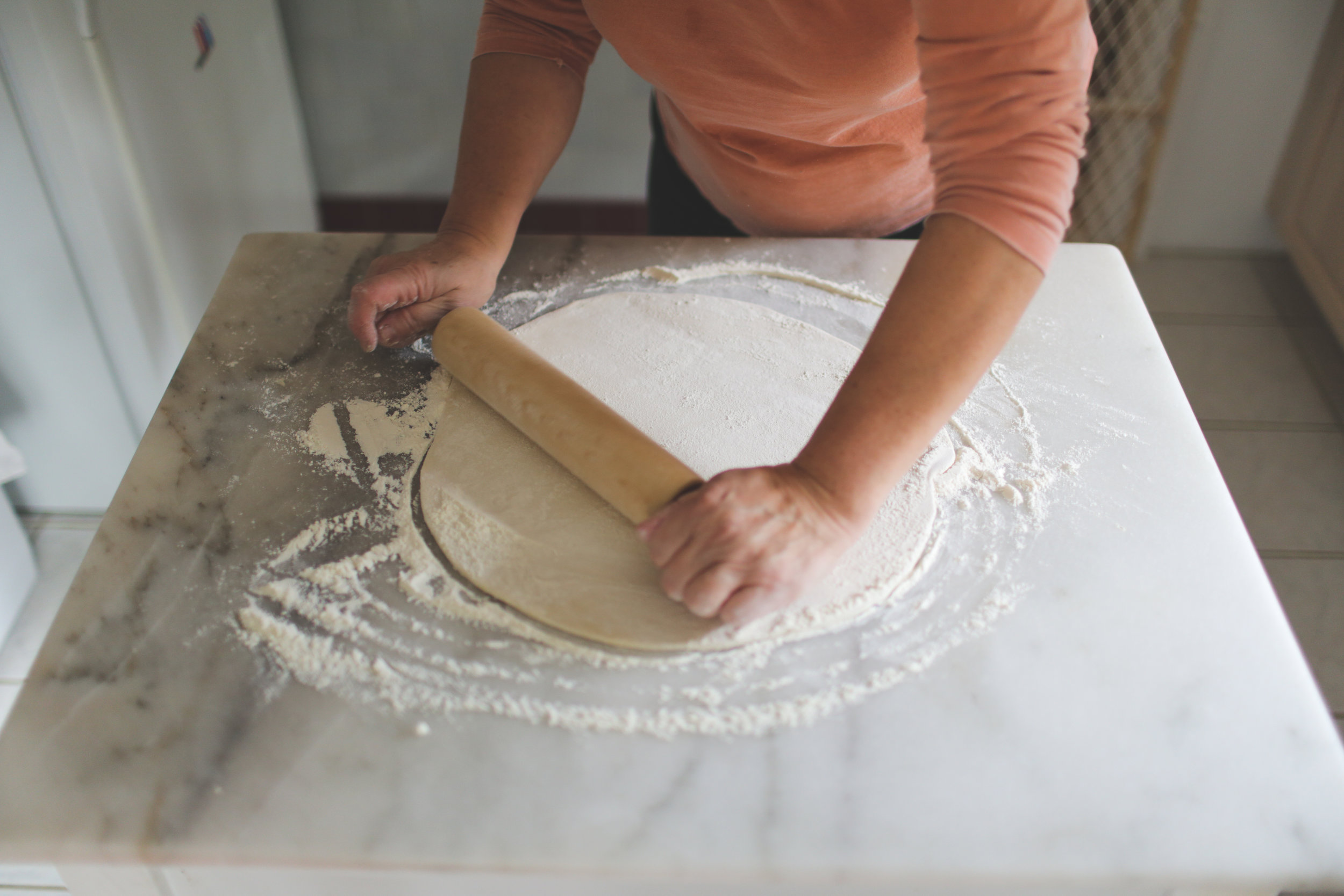
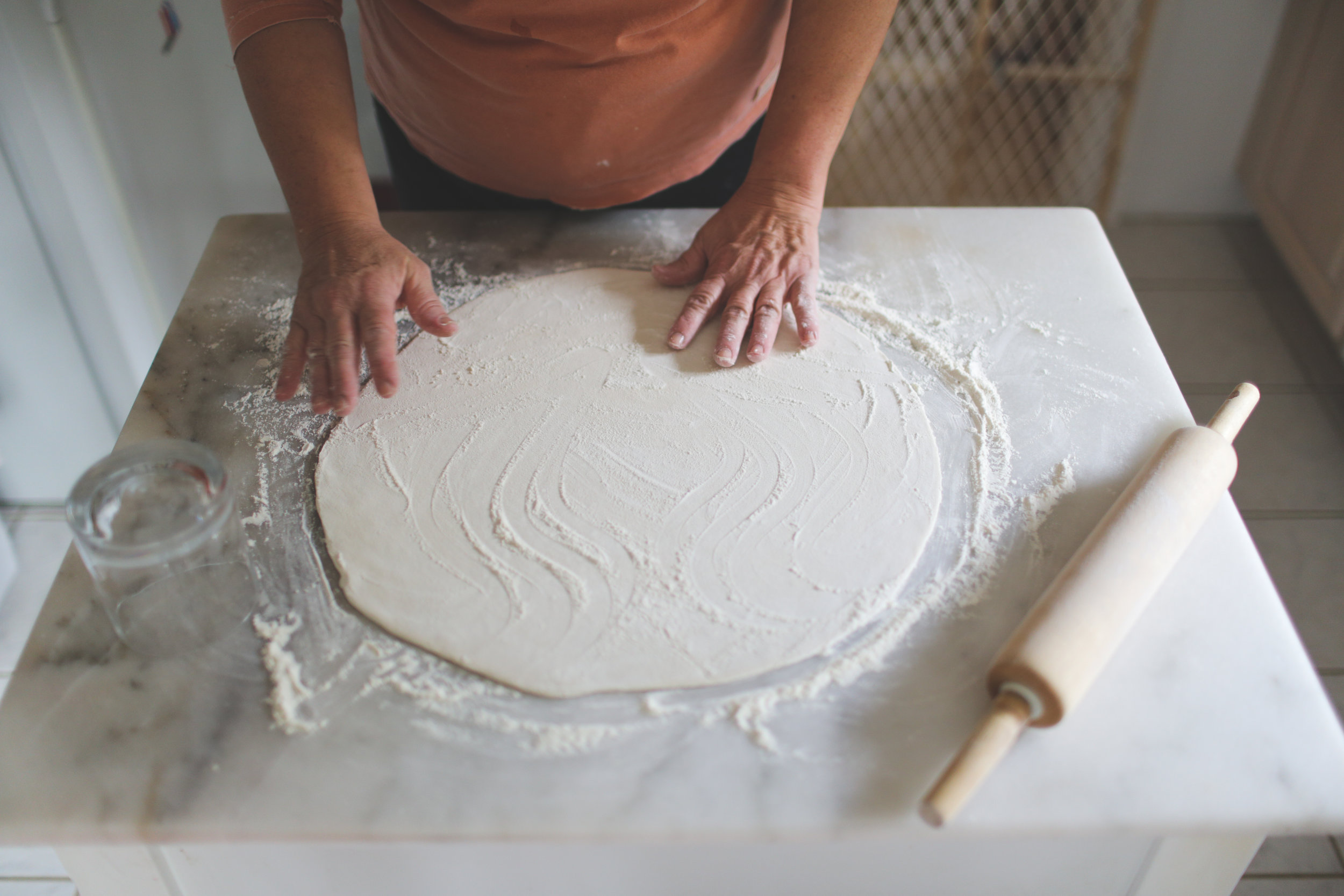
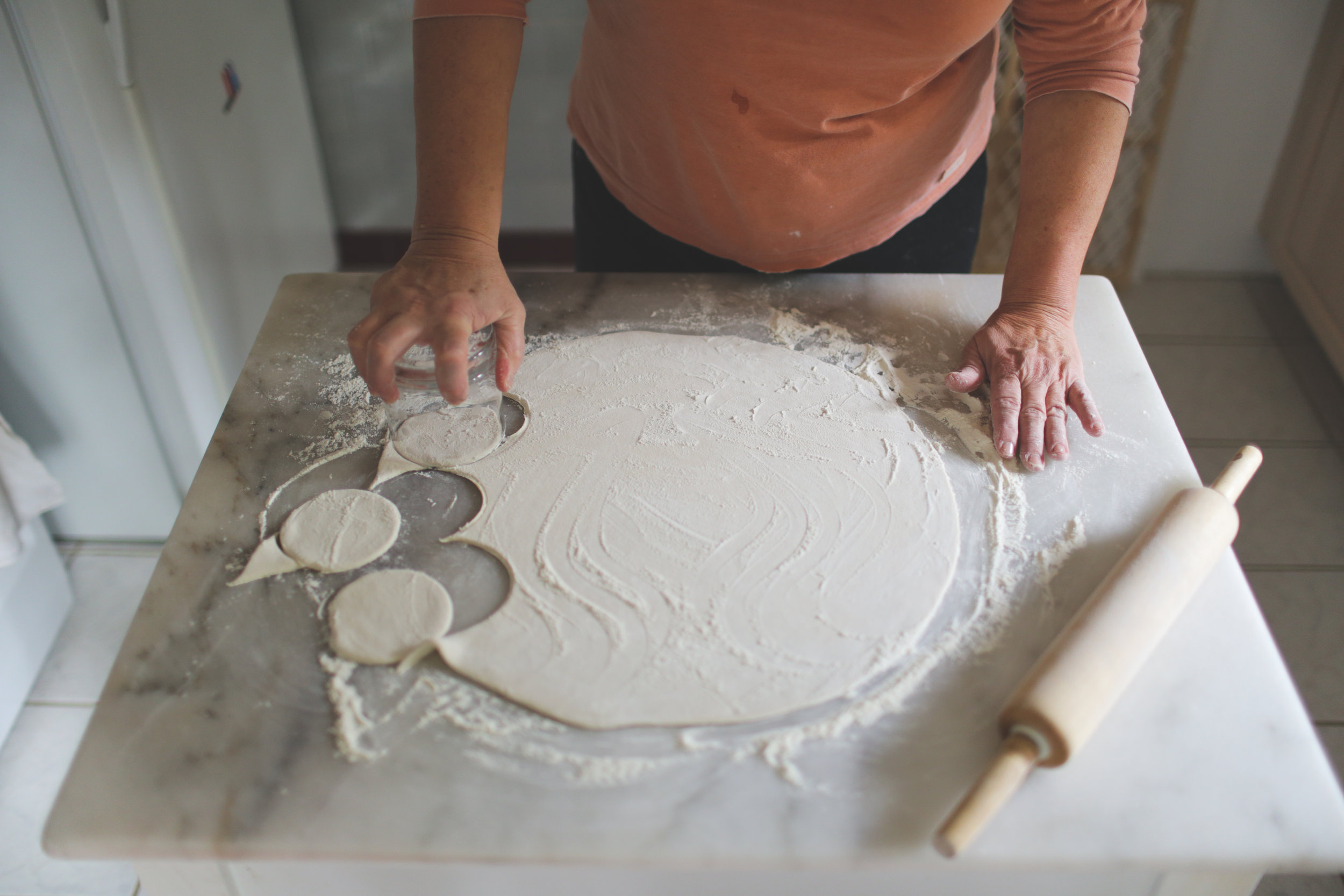
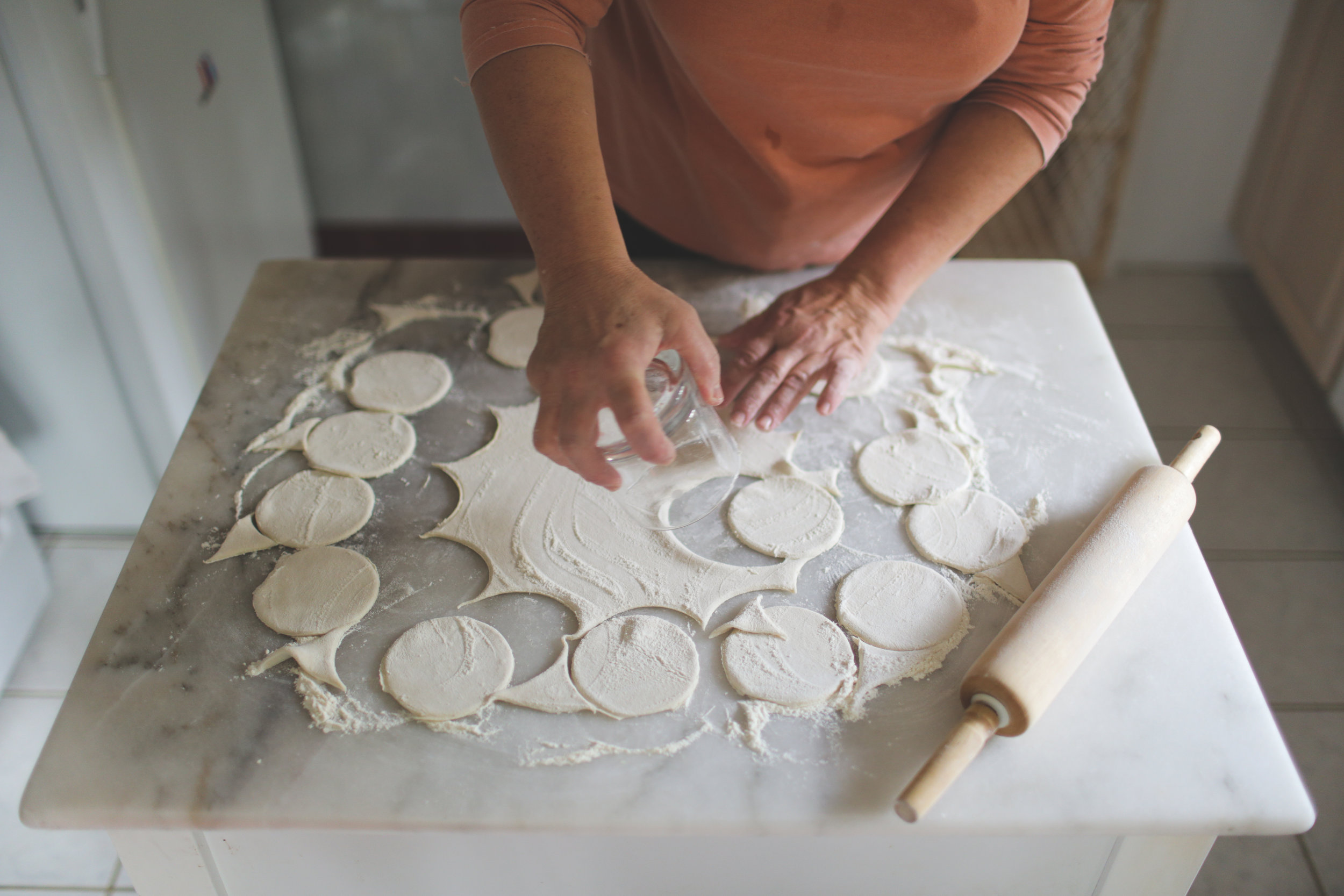
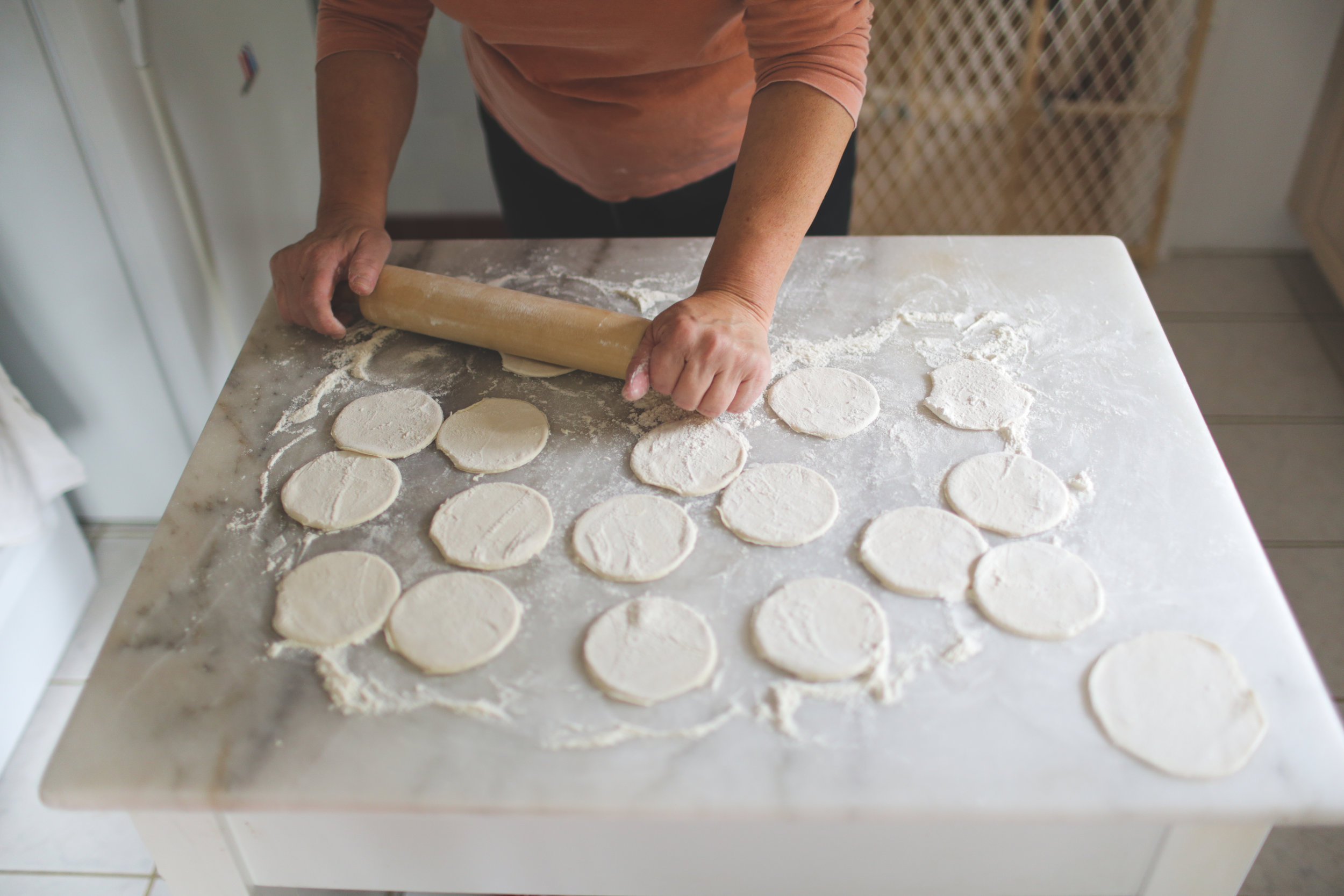
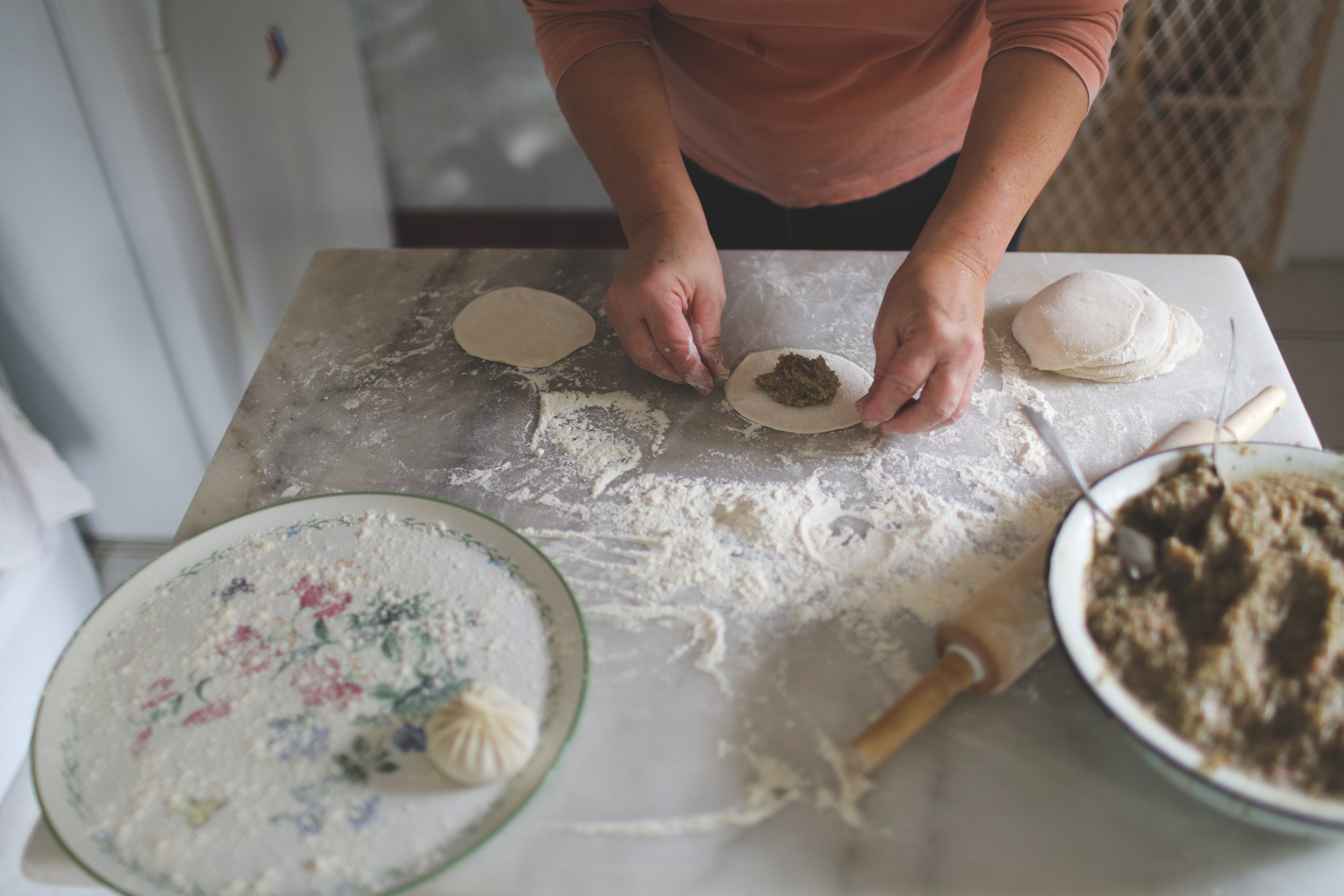

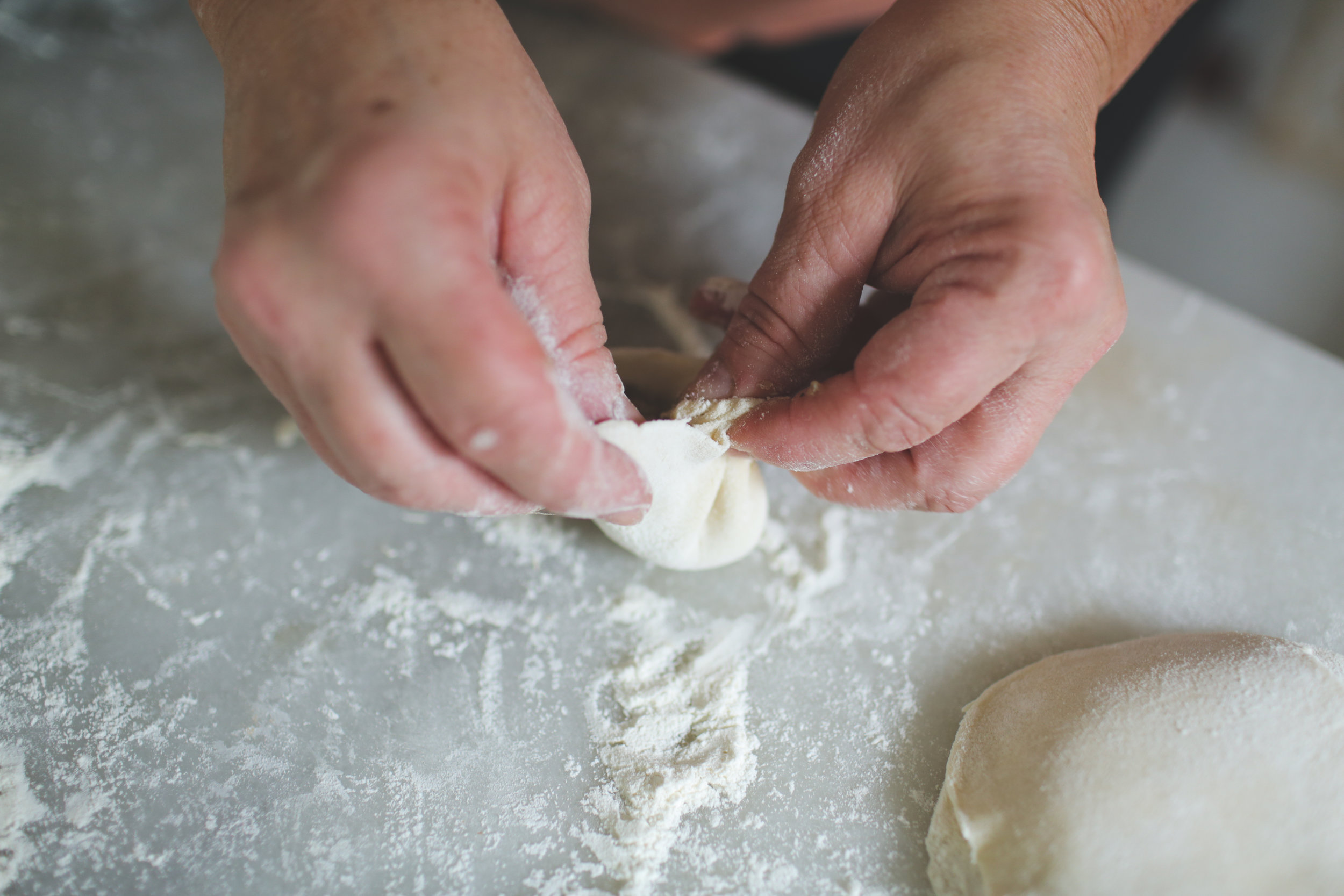
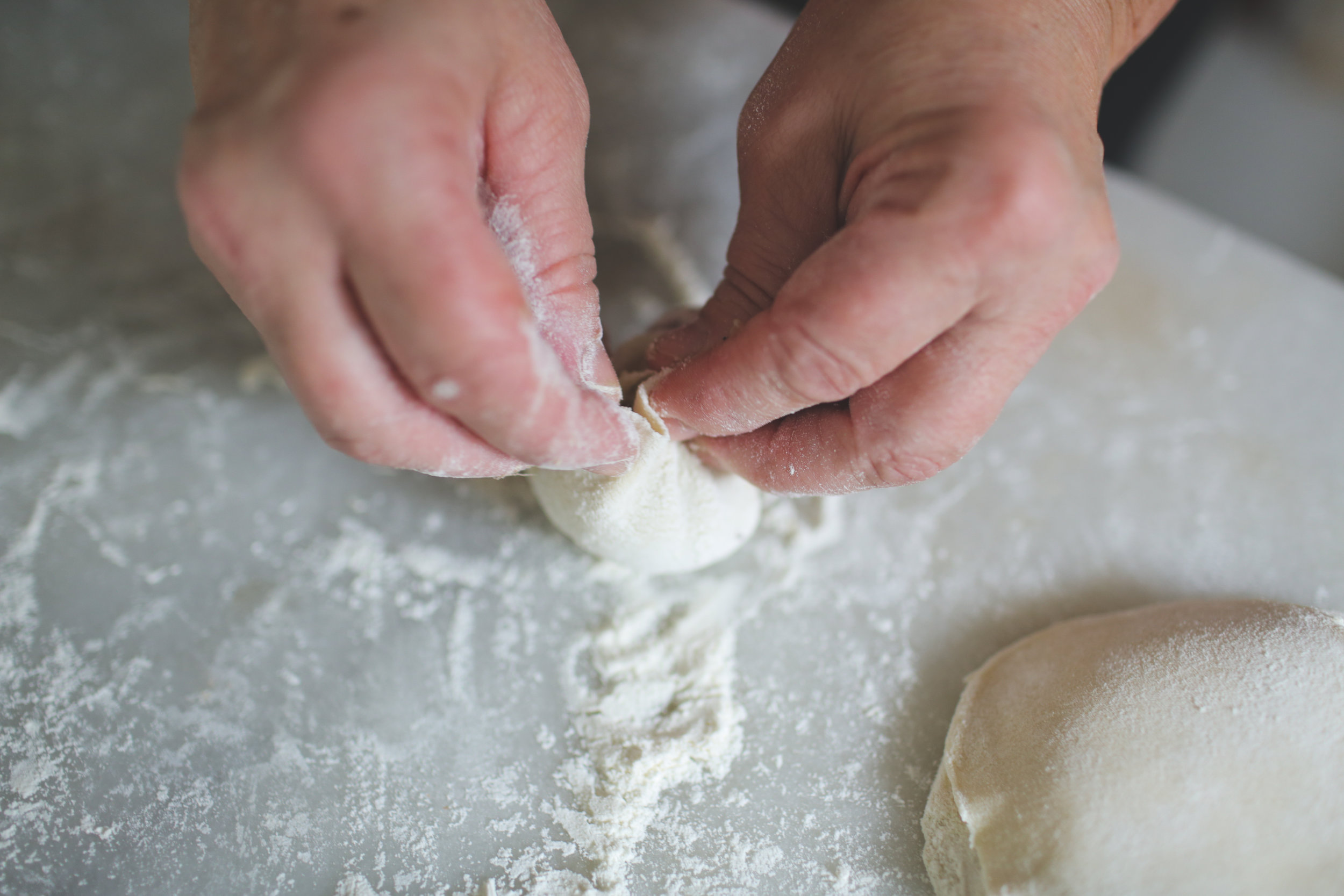
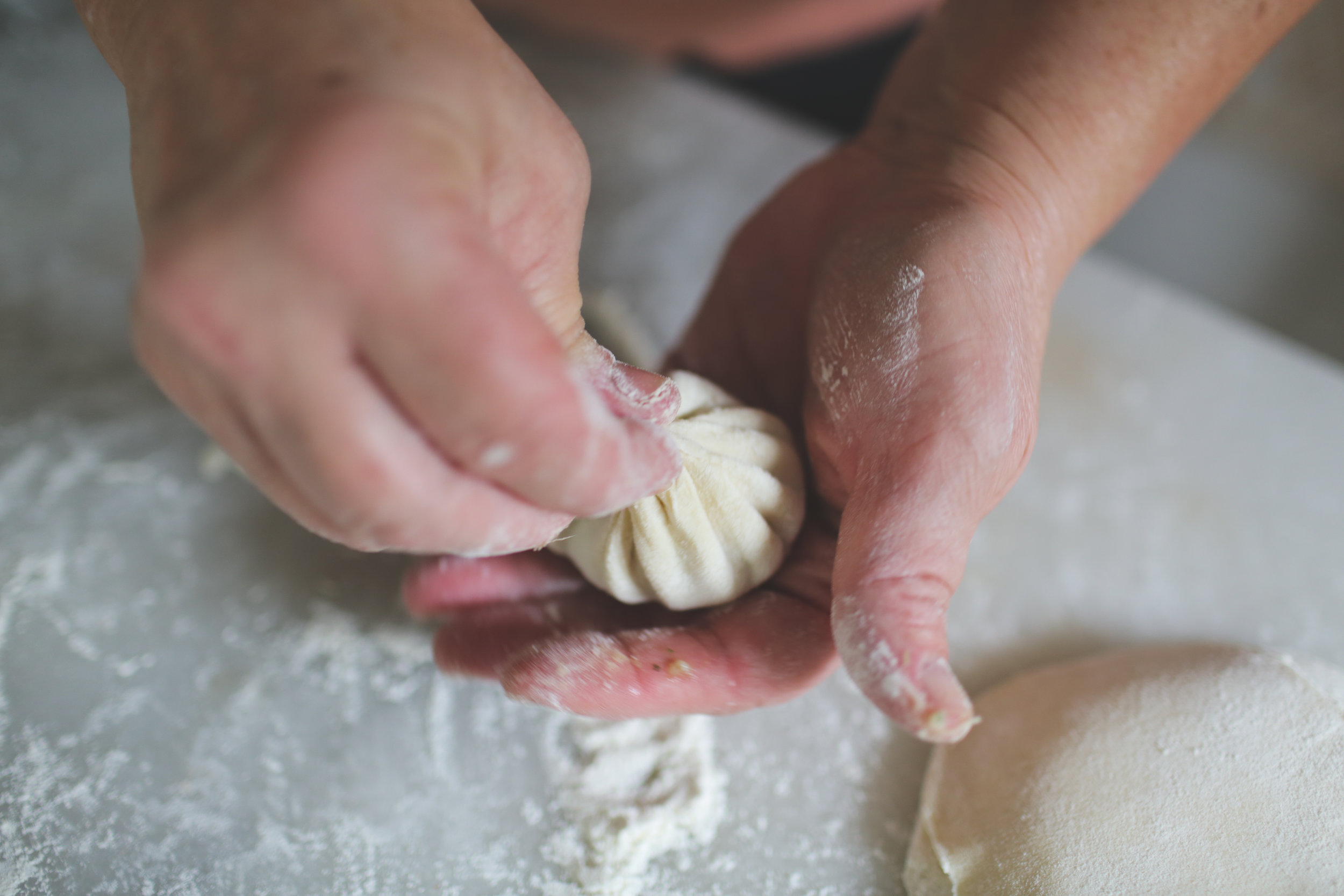
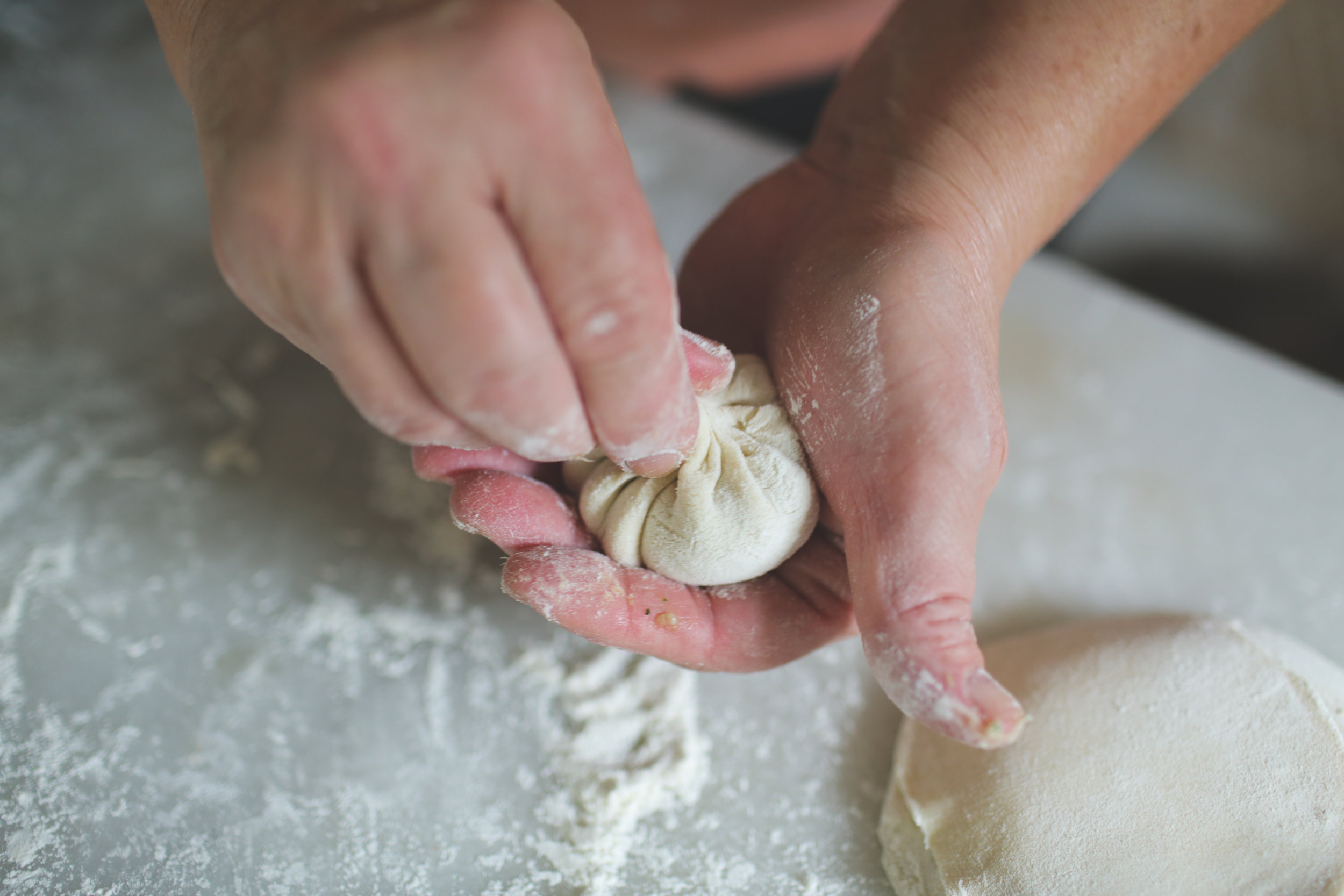
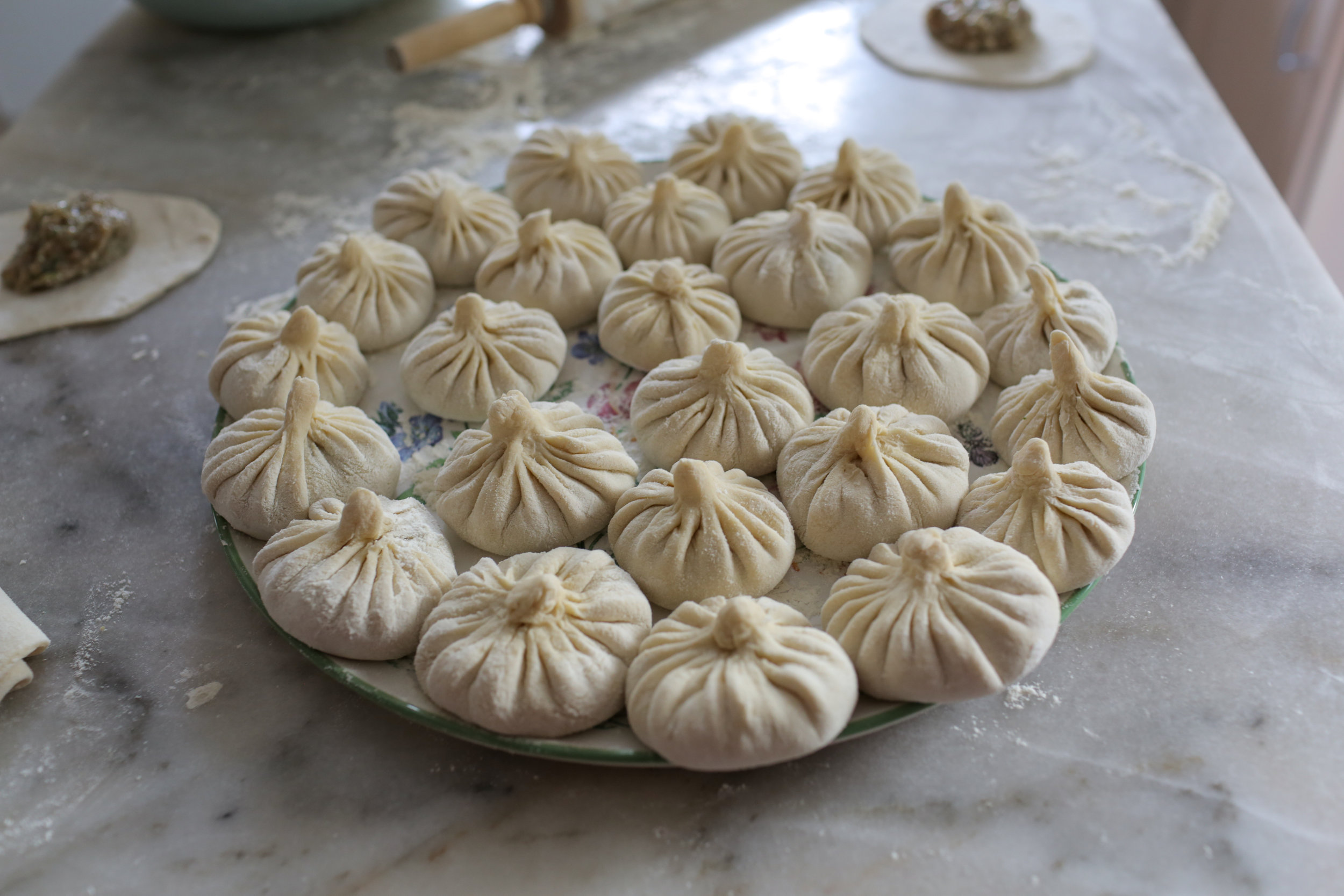
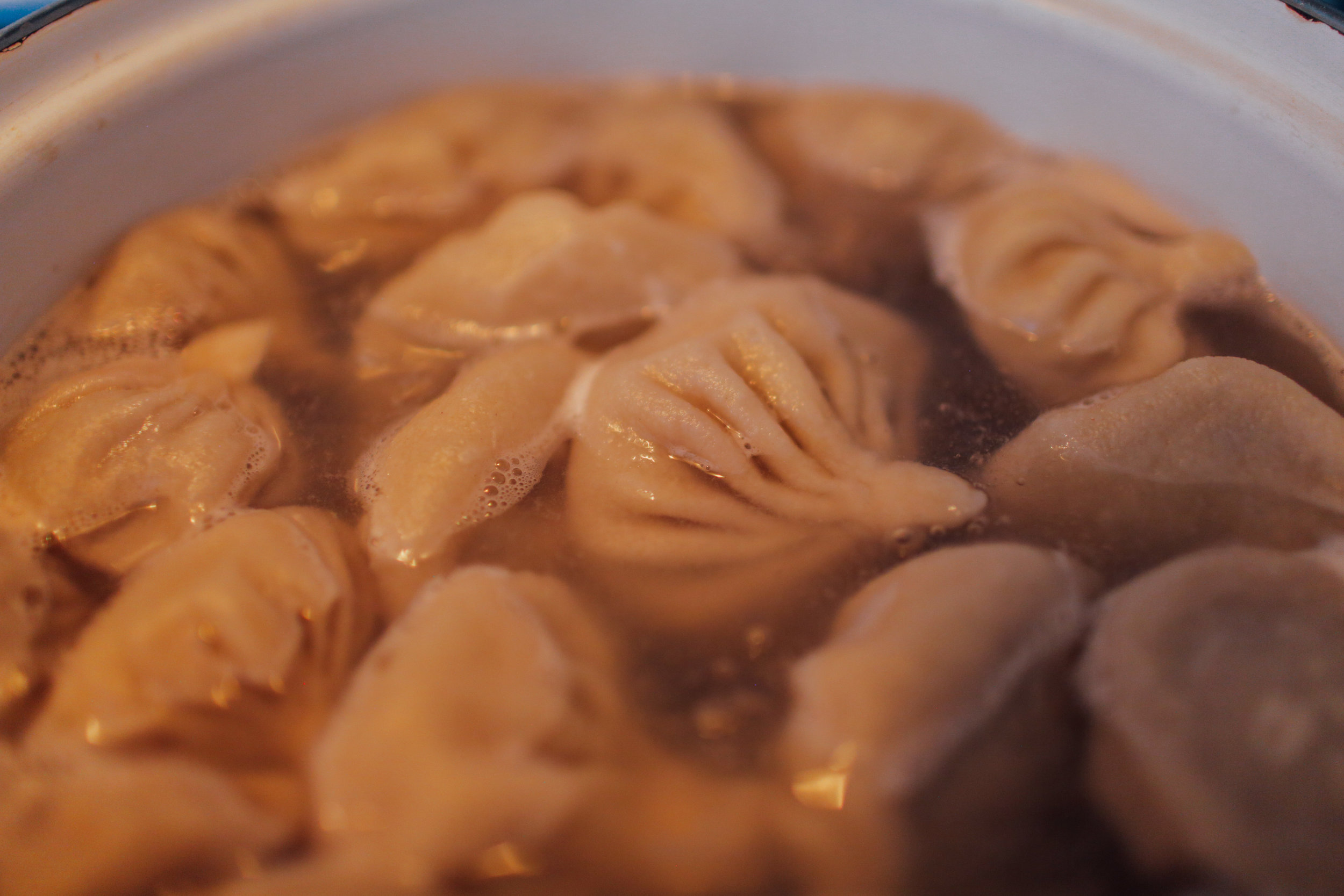
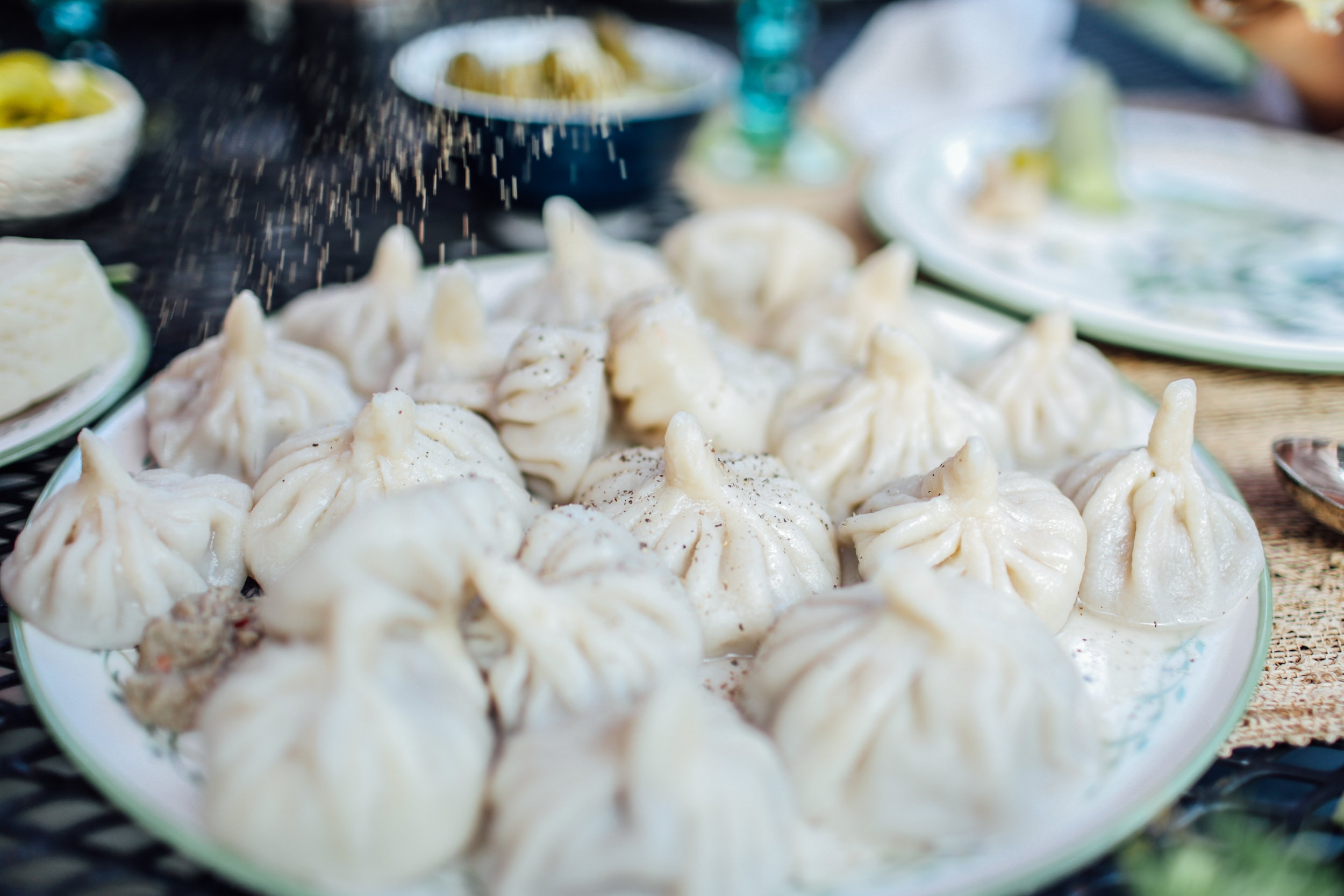
Remnants of the Mongol invasions in the 13th and 14th centuries, khinkali are large juicy, meat-filled soup dumplings spiced with chili, cilantro, and parlsey and characterized by their many pleats and little top knot, kudi (hat) or kuchi (belly button) in Georgian. In the mountains of Georgia, they are made with readily-available lamb, but elsewhere they are prepared with a combination of beef and pork. Cheese and mushroom-filled khinkali are also not uncommon. Although every dumpling house in the city and village in the country claims their khinkali is the best, Pasanauri, with its mineral waters from local hot springs, will always be regarded as the true mecca for khinkali lovers.
Khinkali is typically served with a dusting of freshly cracked black pepper and a sense of urgency—these are best eaten as soon as they come out of the pot. That being said, a few pats of butter or a dollop of sour cream (my personal favorite) on top certainly won’t hurt either. You can serve khinkali with a salad and easily call it a meal—although in Georgia it’s often just one part of a supra, a multi-dish feast.
Cook however many you think you’ll eat, and freeze the rest for when the next dumpling craving strikes. Any leftover cooked dumplings can be, and should be, revitalized the next day with a light fry in butter.
for dough:
500 g (about 3 ¾ cups plus 2 tablespoons) all-purpose flour, plus extra for dusting
1 tablespoon neutral oil
Heaping 1 teaspoon kosher salt
250 g (1 cup plus 1 tbsp ice cold water), plus more as needed
for filling:
227 g (½ pound) ground beef
227 g (½ pound) ground pork
1 medium onion, peeled and roughly chopped
1 cup cilantro, leaves and stems
2 tablespoons cup parsley, leaves and stems
1 teaspoon red pepper flakes
¾ teaspoon ground cumin
2 teaspoons kosher salt
Scant ¾ cup cold water
butter or sour cream for serving (optional)
To make the dough, measure out flour and salt into a large bowl and mix to combine. Make a well and add water, oil, and ice water. Gradually mix in the flour with a large spoon or spatula until it becomes one large, shaggy mess.
Knead the dough on a well-floured work surface, adding more flour if the dough becomes sticky, for a good 10 to to 15 minutes. You want the dough to become smooth and elastic—springing right back when you poke at it. Cover with a damp clean towel and allow to sit for 30 to 45 minutes,
Meanwhile, to make the filling, place the ground beef and pork in a large bowl. Add the onion, cilantro, and parsley to a food processor and pulse the mixture until onions and herbs are finely chopped. Alternatively, you can do this by hand or through the meat grinder attachment of your stand mixer. Add onion-herb mixture to the ground meat, along with spices and salt, and knead by hand until everything is fully incorporated. Add water, a bit at a time, to the meat and continue to knead well until everything is incorporated. Leave the mixture to stand for 1o to 15 minutes. Adding water here is important because it keeps the filling moist and juicy during the cooking process. It, in turn, soaks up the flavor and fat of the meat and becomes the wondrous broth the dumplings are known for.
Cut the rested dough into 2 sections. Take one section (making sure the other half is covered) and roll it out on a floured work surface into a large circle, about ¼-inch thick. You want the dough on the thicker side because you’ll be rolling it out again once you cut it into rounds. Another reason is because the meat-filling is heavy and wet—the last thing you would want is for the dough to break.
Use a glass about 3 to 3 ½ inches in diameter and stamp out rounds from the dough—the remaining cut-outs can be combined and placed beneath the other covered sections. Roll each round out to about 4 to 5 1/2 inches in diameter depending on how big you cut your rounds.
Place one generous spoonful of filling in the center of each round. Using your fingers, take one edge and bring it in towards the center. Moving in a clockwise direction, begin folding the edges, allowing each fold of dough to overlap the previous one. In this way, continue to pleat and pinch as you go, until the filling is completely encased. The magic number of pleats is 19. Anything less is considered unprofessional. Of course, this takes a lot of practice, so just do your best. As long as the top is tightly closed (you don’t want any juices leaking out!) that’s all that matter. To ensure a tight seal, firmly pinch the “neck.” Alternatively, pinch the neck and twist the pleats together while turning the dumpling the other way. Either way, you want to slightly tug the formed knot up to create a bit of space between the dough and filling. the Keep any formed khinkali covered with a damp cloth—you don’t want them to dry out. Repeat with remaining rounds and then, the remaining two sections of dough.
At this point, you can cook them all or just cook what you know you will eat and freeze the rest. Bring a large pot of well-salted water to a boil and, working in batches of 10, lower each khinkali with its topknot facing down. Give the pot a shake to keep the dumplings from sticking and then do not stir until dumplings are done. Once the pot is brought to a boil again, allow to cook for 10 to 12 minutes—they will float up to the top when ready. If cooking from frozen, cook for about 15 minutes. Remove with a slotted spoon, place on a serving platter, and garnish with freshly ground black pepper. Serve immediately, but don’t forget about that second batch boiling away in the pot—for your sake and that of your hungry guests.
A note on eating khinkali:
Before you pierce your khinkali with a fork, stop! You’re doing it all wrong. The whole art of eating khinkali is to never allow the broth escape to anywhere except for into your mouth. The topknot, never to be eaten, serves as your handle for holding the dumpling, as well as your way of keeping count how many you’ve consumed. So, choose the tastiest-looking khinkali and pick it up by its topknot with your fingers. Puncture the dough with a bite, releasing a stream of unctuous broth and happiness into your mouth. Slurp those juices and take the next bite, revealing juicy, tender meat. Devour the dumpling until all your left with is the doughy topknot. Continue to eat khinkali until your plate is littered with kudi—the person with the most, wins.


